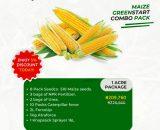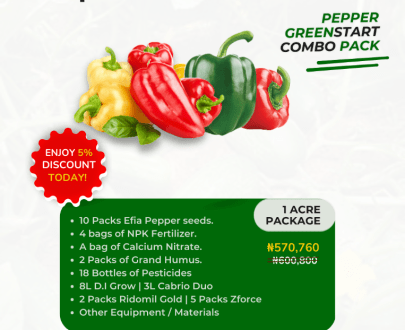If you’re looking to start a maize farming project, you’ll need to carefully plan out what inputs you’ll need to successfully grow and harvest your crop. Maize, also known as corn, is a staple food crop that’s widely grown around the world. It’s also a versatile crop that can be used for animal feed, biofuels, and industrial products. Whether you’re growing sweet corn or a different maize variety, there are several inputs you’ll need to consider.
Maize Seeds: The foundation of any successful maize farming project is high-quality seeds. Maize seeds come in a wide variety of types, including sweet corn, field corn, and popcorn. When choosing your maize seeds, consider the soil type, climate, and length of the growing season in your area. Be sure to select seeds from a reputable supplier that are well-suited to your particular farming needs.
Soil Preparation: Maize grows best in well-draining soil that’s rich in nutrients. Before planting your maize seeds, you’ll need to properly prepare your soil. This may involve tilling, adding compost or other organic matter, and adjusting the soil pH to a suitable range. Make sure to remove any weeds or debris from the planting area to reduce competition for resources.
Fertilizer: Maize requires a lot of nutrients to grow to its full potential. Depending on your soil type and nutrient levels, you may need to apply fertilizer to your planting area. A soil test can help you determine what nutrients your soil is lacking and how much fertilizer to apply. Be sure to use a fertilizer that’s specifically formulated for maize and follow the instructions carefully to avoid over-applying.
Planting: When planting your maize seeds, there are a few key things to keep in mind. First, make sure the soil is warm enough for planting (above 60°F). Maize also prefers full sun and should be planted in rows with a spacing of about 30 inches. You can plant your seeds by hand or use a planter machine for larger planting areas.
Water: Maize needs plenty of water to grow and thrive. In general, maize should receive about 1 inch of water per week. If you’re not getting enough rainfall, you may need to irrigate your planting area. Be sure to water your maize plants deeply and regularly to encourage strong root growth and help the plants withstand dry periods.
Pest and Disease Control: Like any crop, maize is susceptible to pests and diseases that can reduce yields or even kill your plants. Some common maize pests include cutworms, earworms, and corn borers, while diseases like gray leaf spots and rust can also be a problem. To protect your maize crop, consider using integrated pest management techniques that minimize the use of chemical pesticides.
Harvesting: Depending on the maize variety you’re growing, you can expect to harvest your crop in about 75 to 100 days after planting. Maize is usually ready to harvest when the kernels are plump and the husks are dry and brown. You can harvest your maize by hand or use a mechanical harvester for larger crops.
In conclusion, We have carefully selected the best sets of inputs that will guarantee the maximum success of your maize farming business. By selecting high-quality seeds, properly preparing your soil, applying fertilizer as needed, planting at the right time, providing adequate water, and protecting your crop from pests and diseases, you can enjoy a bountiful harvest of maize.









Customer reviews
Reviews
There are no reviews yet.
Only logged in customers who have purchased this product may leave a review.